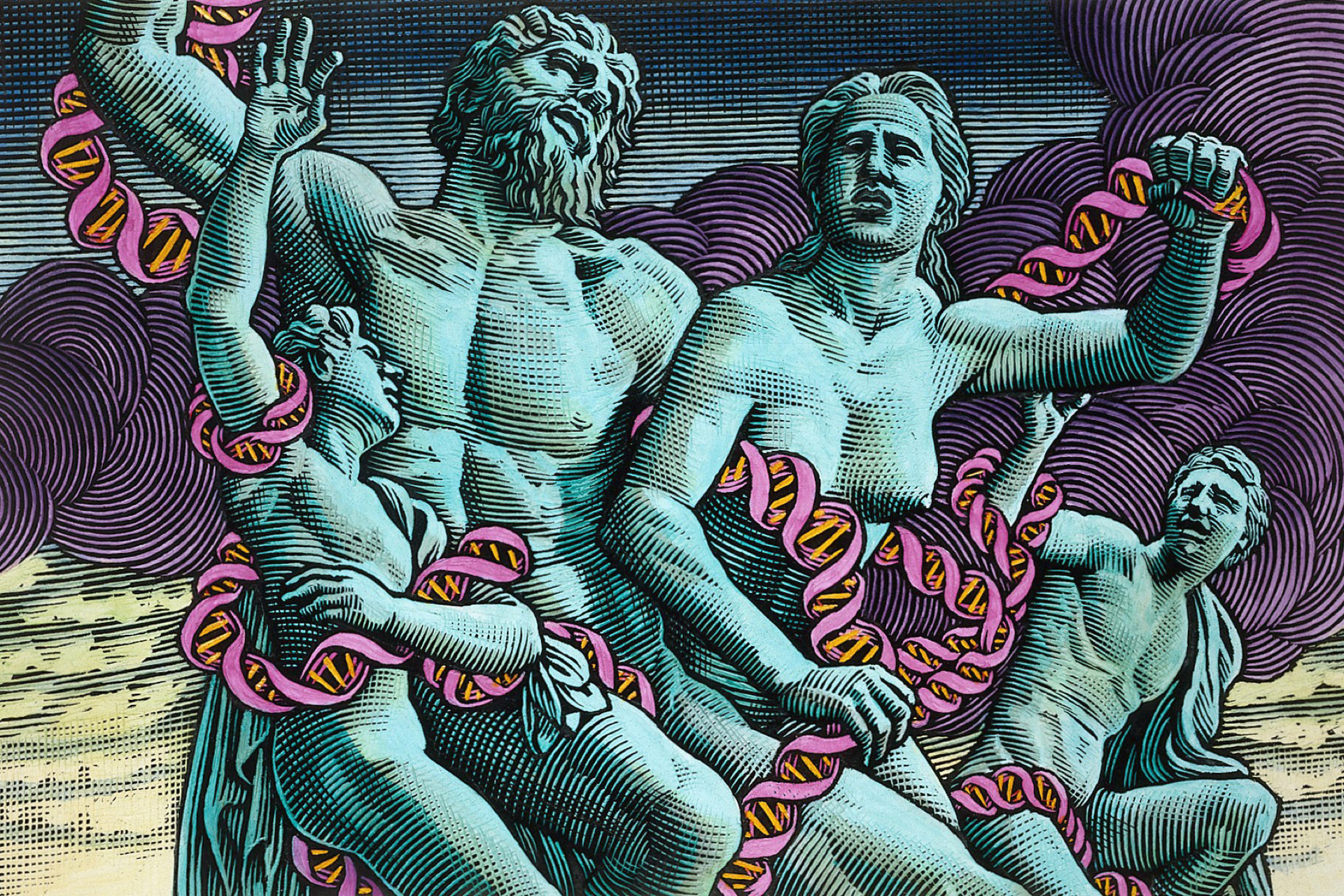Adult human skin cells have been reprogrammed to form three-dimensional structures similar to early human embryos by a team led by Professor Jose Polo at Monash University, Australia (see BioNews 1088).
Called 'iBlastoids', they could potentially enable us to learn how early human embryos develop and implant in the uterus. The studies could also lead to medical treatments for conditions such as infertility, miscarriage, developmental disorders and genetic diseases.
Typically, the development of an embryo begins with an egg being fertilised by the sperm, leading to cell divisions. After about five days, it results in a ball of around 100 cells called the blastocyst. In comparison, iBlastoids are created when cells removed from the adult human body (in this experiment, skin cells) are reprogrammed to become induced pluripotent stem (iPS) cells, using the innovative technique pioneered by the Japanese scientist Shinya Yamanaka. These iPS cells can be directed to specialise into different types of specific kinds of cells. The blastocyst-like organisation and derivation from iPS, give rise to the name iBlastoid.
Like most medical breakthroughs, there are further questions outside the scientific domain: the challenging areas of ethics and the law. International guidelines and laws in many countries regarding embryo and stem cell research set strict limits. Many western countries have adopted the 14-day limit on embryo research where the embryo has to be destroyed by the fourteenth day. This rule was recommended in the UK's 1984 Warnock Report in the early days of IVF. In Australia, under the Prohibition of Human Cloning for Reproduction and the Regulation of Human Embryo Research Amendment Act 2006, it is illegal for scientists to allow the development of a human embryo outside the body of a woman for more than 14 days.
Currently, there is uncertainty whether iBlastoids are permitted within these laws and guidelines to develop beyond the developmental stage when the primitive streak forms, which is around day 14 after fertilisation. If they are treated as human embryos, they need to be destroyed by scientists on the fourteenth day to comply with the current law.
On an important note, while iBlastoids are comparable to human blastocysts, there are also distinctions. It is emphasised that these iBlastoids are not actual human embryos. They are unfertilised cellular models of human embryos made in the lab. iBlastoids cannot develop into babies.
As the Monash team concluded, 'they should not be considered as an equivalent to human blastocysts... the iBlastoids are derived from adult donor fibroblasts and not via fertilisation.' However, they also conceded that 'the developmental potential of iBlastoids as a model for primitive streak formation and gastrulation remains to be determined, and will require an international conversation on the applicability of the 14-day rule to iBlastoids.'
Even if the 14-day limit applies to iBlastoids, this rule was formed decades ago. It was a somewhat arbitrary compromise between gaining the utilitarian benefit of scientific research and alleviating public concern during the early IVF days (see BioNews 883).
As the late Baroness Mary Warnock explained, 'the number 14 was not arbitrary in the sense we drew it out of a hat. But it was arbitrary in the sense that it might have been a different number'. Bioethicist, John Harris opined that the overall consensus of scientific opinion is that researchers can learn much by extending the 14-day limit to 21 days. In comparison, abortion in some societies is legally permitted up to 24 weeks gestation, a threshold that is way beyond the 21 days' limit.
Recently, an international team of scientists and ethicists had called for the 14-day limit on embryo research to be abolished (see BioNews 1086). They did not suggest an extension of the 14 days (to, say, 21 days) but they recommended a 'cautious, stepwise approach' to scientific research beyond the 14-day limit. This approach comprises six principles to consider whether the window for research on human embryos can be extended in incremental measured steps. These principles include scientific justification, well-defined increments, independent peer review, public dialogue, informed consent and separation of clinical care and research.
The International Society for Stem Cell Research (ISSCR) – often regarded as the de facto regulator in the field – had several meetings to update the 2016 version of the guidelines. While not legally binding, these guidelines are influential and are referred to by universities, research institutes, and funding companies. The Monash team references the ISSCR guidelines in the Nature article. It will be intriguing to see what the revised guidelines will recommend regarding the limits of the creation of iBlastoids.






Leave a Reply
You must be logged in to post a comment.